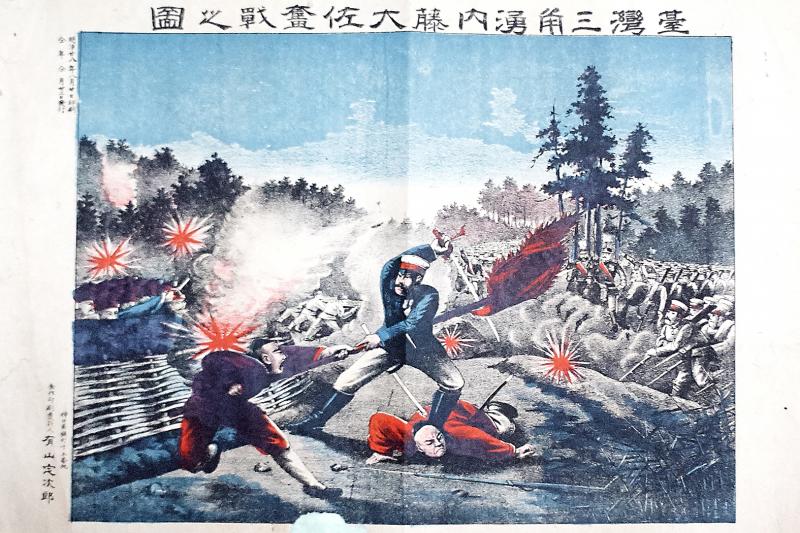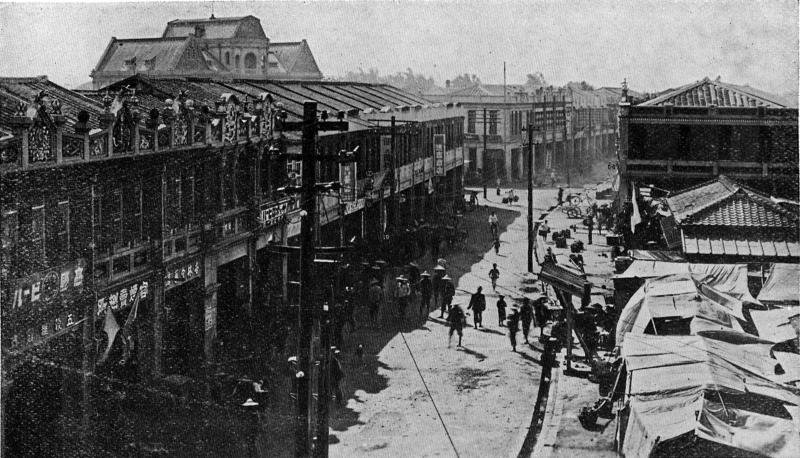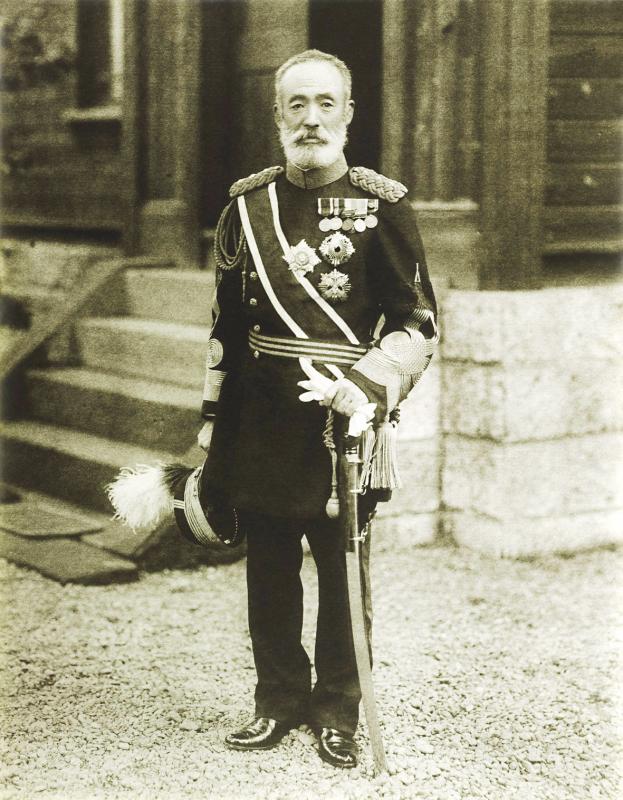May 23 to May 29
After holding out for seven years, more than 250 Yunlin-based resistance fighters were finally persuaded to surrender in six separate ceremonies on May 25, 1902. The Japanese had subdued most of the Han Taiwanese within six months of their arrival in 1895, but intermittent unrest continued — in Yunlin, the Tieguoshan (鐵國山) guerillas caused the new regime much headache through at least 1901.
These surrender ceremonies were common and usually conducted peacefully, but the Japanese had different plans for these troublemakers. Once the event concluded, they gunned down every single attendee with machine guns.

Photo courtesy of Wikimedia Commons
Only Chien Shui-shou (簡水壽) survived because he left early, but he was caught and executed along with several other leaders three months later.
The remaining commanders either fled to China or went into hiding, drawing an end to this chapter of anti-colonial resistance in the area that included the bloody Yunlin Massacre of 1896, where countless combatants and civilians were killed indiscriminately and thousands of homes were burned down. The event was reported in Hong Kong and British newspapers, causing an international outcry, and Yunlin subprefecture head Yunoshin Matsumura was stripped of his honors and sent back to Japan.
The Japanese took a more tempered approach after that, preferring to force combatants to surrender so they could help fight other rebels, but as the massacre showed, they were still ruthless against anyone who pushed them too far.

Photo courtesy of Wikimedia Commons
STIFF RESISTANCE
The Japanese arrived in Taiwan in May 1895 after the Qing Empire ceded the island to them through the Treaty of Shimonoseki. After taking Taipei without a hitch, they encountered stiff resistance as they made their way south, with the biggest clash occurring three months later in Changhua, just north of Yunlin.
There were already many armed militias and bandit groups in the Yunlin area as Han settlers frequently fought each other and indigenous warriors, and they made up the bulk of the local resistance. Wu Te-kung (吳德功) writes in his early-1900s account of the resistance that Yunlin strongman Chien Yi (簡義) and several others participated in the defense of Changhua before retreating back south.

Photo courtesy of Wikimedia Commons
After recuperating in Changhua, a contingent of Japanese troops passed through Yunlin without much trouble — at times even welcomed by locals — before stationing in Chiayi’s Dalin (大林) area. However, the misconduct of the soldiers quickly led to local resentment, and the people rose up and attacked them.
With the help of Liu Yong-fu’s (劉永福) Black Flag Army, as well as various local armed groups recruited by Liu’s subordinate, Wang Te-biao (王得標), they managed to drive the Japanese back into Changhua.
Japanese reinforcements soon arrived, and after a few weeks of rest, they pushed south again on Oct. 5, clashing with Wang and Chien’s brigades. The Japanese easily prevailed, and reached Tainan on Oct. 21. Like the previous two leaders of the Republic of Formosa, Liu fled to China without putting up a fight.
MOUNTAIN GUERILLAS
The resistance was far from over, however, as revolts broke out intermittently across Taiwan during the next two decades. Chien joined forces with Ko Tie (柯鐵) and retreated into the Dapingding (大坪頂) mountains of western Yunlin, forming the Tieguoshan guerillas.
Nicknamed the “Iron Tiger,” Ko was a young farmer from Dapingding who had a reputation for violence. He joined Chien’s army and helped him defend Douliu (斗六) before heading for the hills with him. Ko was extremely familiar with the local terrain, and made a name for himself as a shifty combatant who seemed to appear and disappear at will and shoot at the Japanese.
On June 12, 1896, a Japanese-owned shop near the Douliu police station was robbed in the middle of the night. Matsumura was furious. The police rounded up more than 20 people who were suspected to have ties to the Tieguoshan rebels, and found out where they were hiding.
After half of the unit they sent to investigate Dapingding was wiped out, the Japanese began amassing troops in Douliu in preparation for a major assault. Convinced that the locals were in cahoots with the rebels, Matsumura declared that “there are no good citizens in Yunlin” and launched a bloody indiscriminate campaign in the villages near the mountain. Thousands of houses were burned over a week, and the death toll varies from 700 to tens of thousands.
The Japanese thought this would scare the rebels into giving up, but instead it attracted more fighters to their side. They launched an offensive on June 28, reaching Douliu in three days as their numbers grew, many of them civilians armed with farming tools. Matsumura fled to Chiayi, and rebels entered Nantou and pushed as far north as Taichung.
The Japanese quickly struck back, this time with strict instructions not to harm anyone who was unarmed. By July 25, the resistance was crushed.
BLOODY SURRENDER
Due to international pressure, the government decided to employ loyal Taiwanese elites such as Lukang’s Koo Hsien-jung (辜顯榮) to persuade the rebels to surrender. Chien answered the call on Oct. 5, 1896, upon which Ko became the leader of Tieguoshan.
Chien was awarded a gentry medal and a minor local official position. He died from illness a year later.
Ko refused to give up and continued raiding the Japanese over the next year. After losing four more battles, he also turned himself in in March 1899. However, unrest continued in Yunlin over the next two years, and Japanese officials finally had enough. On May 25, 1902, they gathered over 250 rebels and had them formally surrender in six ceremonies across the subprefecture.
Ke Kuang-jen (柯光任) writes in “Matsu Legends in the 1895 Anti-Japanese War and Structural Amnesia” (乙未抗日媽祖傳說與結構性失憶) that in addition to the persistent unrest, local officials were annoyed that these surrendered “bandits” were given all sorts of privileges. After seven years, two of Yunlin’s major rebel commanders were still at large, and subprefecture officials decided to revert once more to extreme measures.
The surrendering fighters each wore a white flower on their chest, the size of it indicating their rank in the resistance army. At the end of the ceremony at Douliu, officers arrived under the guise of searching for weapons. The rebels attempted to fight back for the last time, but the soldiers and policemen were already in position to open fire.
There appeared to be no repercussions for this act. The Taiwan Daily News (台灣日日新報) claimed that the rebels tried to start a riot, and that was that. It would not be the first time they used this tactic either.
Taiwan in Time, a column about Taiwan’s history that is published every Sunday, spotlights important or interesting events around the nation that either have anniversaries this week or are tied to current events.

This month the government ordered a one-year block of Xiaohongshu (小紅書) or Rednote, a Chinese social media platform with more than 3 million users in Taiwan. The government pointed to widespread fraud activity on the platform, along with cybersecurity failures. Officials said that they had reached out to the company and asked it to change. However, they received no response. The pro-China parties, the Chinese Nationalist Party (KMT) and Taiwan People’s Party (TPP), immediately swung into action, denouncing the ban as an attack on free speech. This “free speech” claim was then echoed by the People’s Republic of China (PRC),

Exceptions to the rule are sometimes revealing. For a brief few years, there was an emerging ideological split between the Democratic Progressive Party (DPP) and Chinese Nationalist Party (KMT) that appeared to be pushing the DPP in a direction that would be considered more liberal, and the KMT more conservative. In the previous column, “The KMT-DPP’s bureaucrat-led developmental state” (Dec. 11, page 12), we examined how Taiwan’s democratic system developed, and how both the two main parties largely accepted a similar consensus on how Taiwan should be run domestically and did not split along the left-right lines more familiar in

As I finally slid into the warm embrace of the hot, clifftop pool, it was a serene moment of reflection. The sound of the river reflected off the cave walls, the white of our camping lights reflected off the dark, shimmering surface of the water, and I reflected on how fortunate I was to be here. After all, the beautiful walk through narrow canyons that had brought us here had been inaccessible for five years — and will be again soon. The day had started at the Huisun Forest Area (惠蓀林場), at the end of Nantou County Route 80, north and east

Specialty sandwiches loaded with the contents of an entire charcuterie board, overflowing with sauces, creams and all manner of creative add-ons, is perhaps one of the biggest global food trends of this year. From London to New York, lines form down the block for mortadella, burrata, pistachio and more stuffed between slices of fresh sourdough, rye or focaccia. To try the trend in Taipei, Munchies Mafia is for sure the spot — could this be the best sandwich in town? Carlos from Spain and Sergio from Mexico opened this spot just seven months ago. The two met working in the